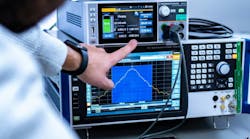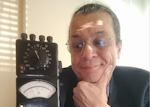Wireless Power Tester Prototype Claimed First for AirFuel Apps
What you'll learn:
- Details about AirFuel RF contactless power transfer technology.
- Rohde & Schwarz's proof of concept for testing far-field wireless power systems.
The number of wireless communication devices is growing to the point where billions will be in use by the end of the next decade. These next-generation portable and deployable devices demand innovative power solutions, as legacy solutions such as manual recharging, battery replacements, or wireless-charging pads are impractical, expensive, and require regular maintenance.
RF technology offers an alternative where devices can be wirelessly powered. Recently, Rohde & Schwarz showcased a proof of concept for this technology with a wireless power tester system prototype.
AirFuel RF creates zones of power for use by enabled devices, opening the door to wireless power in a variety of markets and applications. Multiple devices across an array of applications can be powered simultaneously up to several feet from the power source, without precise placement.
For low-power IoT devices, for example, this technology would allow sensors to be powered without manual recharging or battery exchange inside a smart building or car. Wireless power transmission also has environmental benefits, as it enables the use of battery-less devices, potentially reducing the impact of batteries on the environment.
Rohde & Schwarz's proof of concept for testing far-field wireless power systems uses the company’s test and measurement equipment along with wireless-charging development kits available on the market. Offering test automation features and a user-friendly web interface, the platform supports the AirFuel Alliance RF Standard.
The company's wireless power project aims to develop a comprehensive testing solution for wireless power transmitters and receivers, supporting the AirFuel Alliance Conformance Test Specification for RF charging. The test setup leverages the R&S SMB100B RF and microwave signal generator, R&S FSV3000 signal and spectrum analyzer, and R&S NGU source measure unit (used as a battery emulator), along with two R&S HMC8012 digital multimeters. It can be controlled and automated via a web interface.

